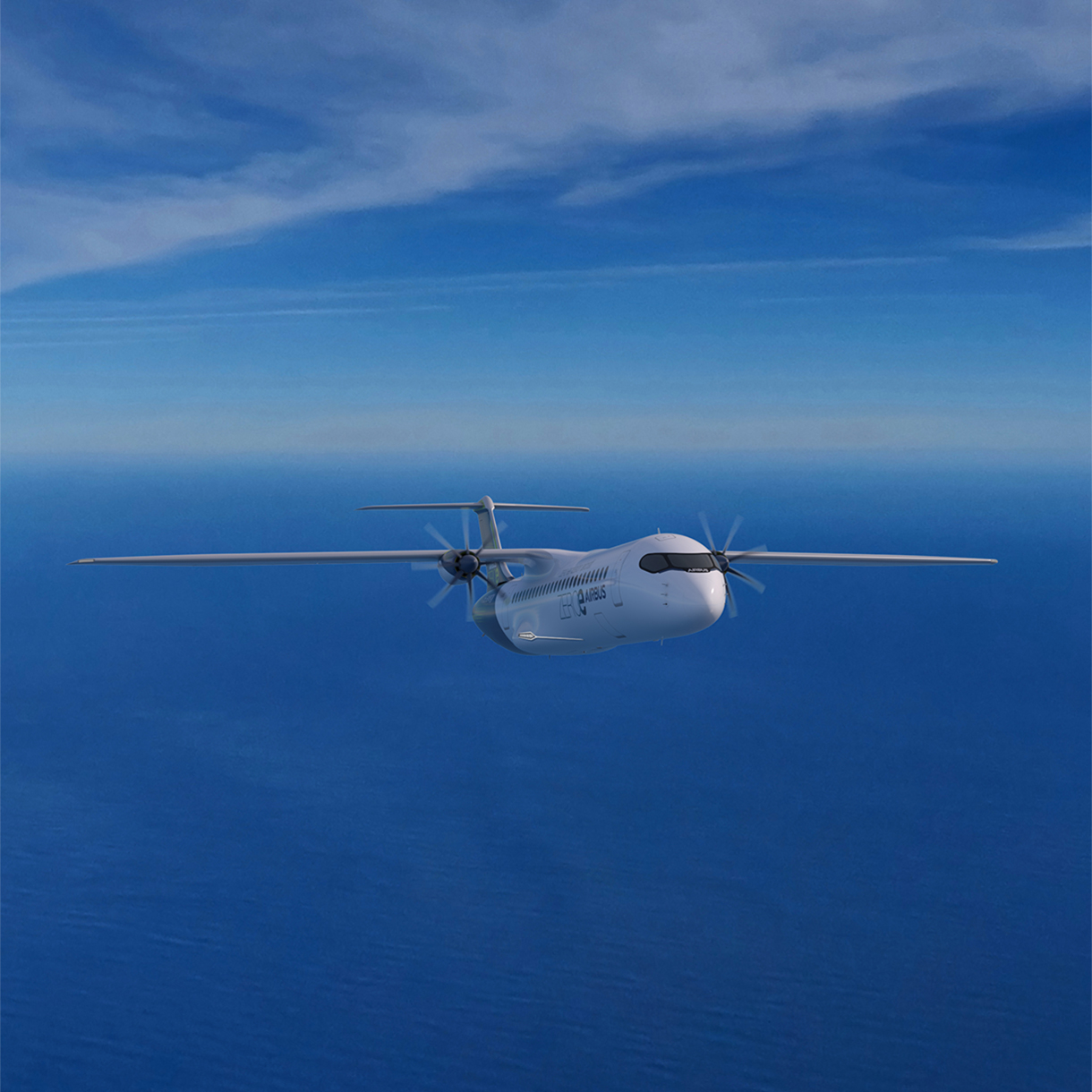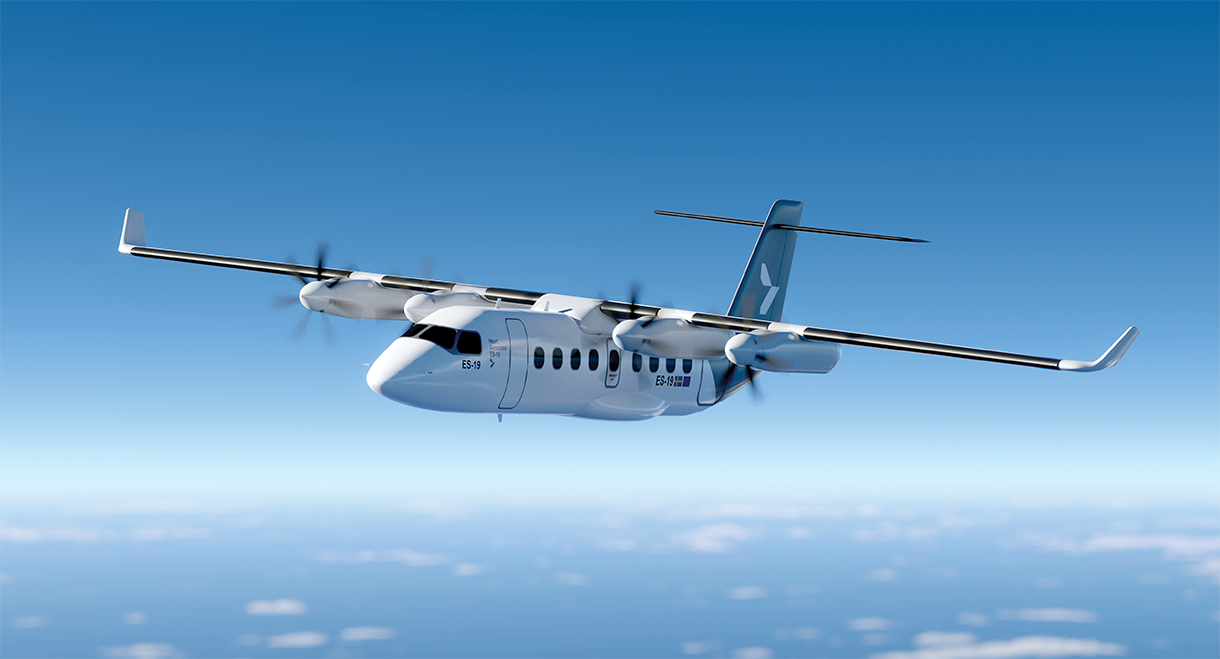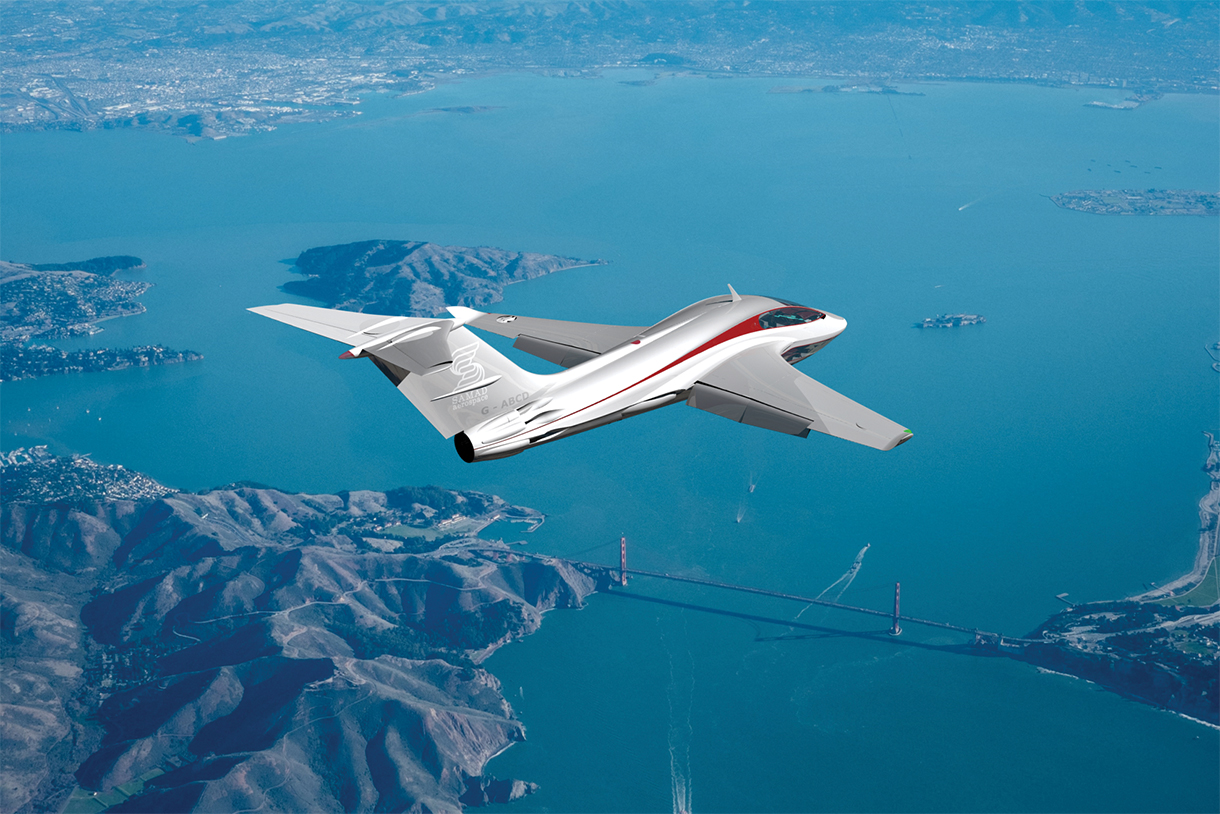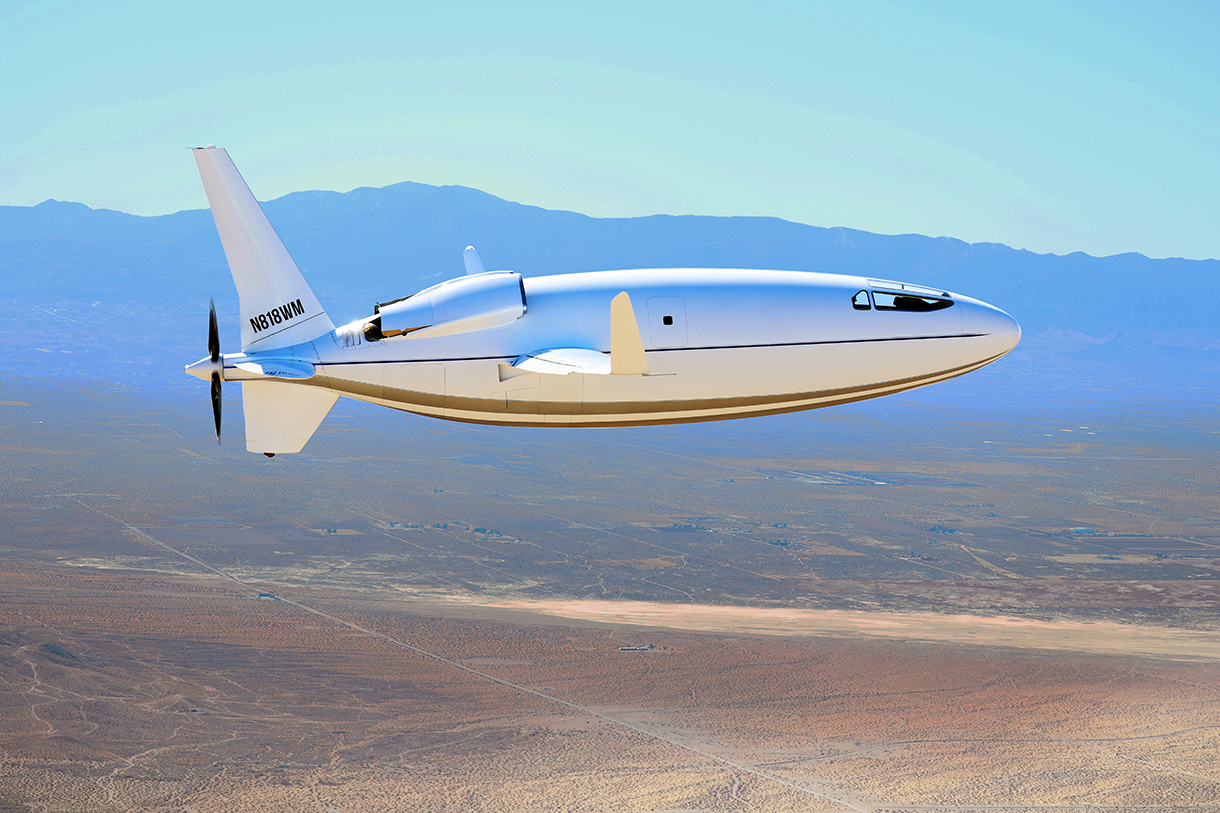
Greener Skies Ahead
Aircraft designs for both commercial and private use are proving the benefits of biofuel solutions and low-emission flight—with eco-friendly planes already taking off.
Electric propulsion has long been a buzz topic in conversations surrounding sustainable aviation. At the 2011 Paris Air Show, Diamond Aircraft showed off its DA36 E-Star, a two-seat glider that used a gas-fueled generator and a battery to power a small electric motor. Soon start-ups and aviation giants alike raced to build the first Tesla of the sky. The results: lots of eye-catching renderings—and not many actual flights.
Now some sustainable concepts are becoming reality. Aviation giants like Boeing and Airbus have seriously increased their efforts (and investments) for more fuel-efficient forms of flight. After all, a 747 burns about 1 gallon of petroleum-based fuel per second. But a decade from now, Boeing says plants and household garbage will power its jets. And while that may conjure an image of Doc Brown throwing trash into the fusion generator of his time-traveling DeLorean, the future of fuel-efficient flight is rapidly approaching.
Several hybrid and even all-electric planes are in development, while the plant-and-garbage gas (also known as sustainable aviation fuel or simply biofuel) is looking less and less like science fiction. In 2018, Boeing flight-tested a FedEx 777 freight plane powered by 100-percent biofuel, which comes from various non-petroleum sources such as inedible plants, agriculture, forestry waste, and plain old non-recyclable household garbage. In Europe, Airbus is betting on hydrogen for its recently unveiled trio of ZEROe aircraft. Fueled entirely by hydrogen (and thus producing zero emissions during flight), the models could enter service by 2035. For greener operations sooner, Airbus plans to put its new business jet, the ACJ TwoTwenty, which produces up to 50 percent lower emissions than industry standards, into operation in 2023.
Boeing and Airbus are not alone in their pursuit of green flight. In February, NetJets invested a 20-percent ownership stake in WasteFuel, which plans to convert landfill waste into aviation biofuel. The fractional provider also committed to buying 100 million gallons of biofuel from the company over the next decade. Multiple fuel-efficient aircraft are in various stages of development, including from a start-up founded by former Google and Microsoft executives called Zunum Aero. In 2017, the Washington-based company announced major funding from Boeing and others to fly a fleet of 12-seat, hybrid-electric aircraft by 2022. This hope was soon bolstered by a soft commitment from on-demand charter company JetSuite to purchase up to 100 Zunum aircraft. But a year later Zunum ran out of funding; it’s currently suing Boeing, alleging misuse of trade secrets, among other charges. Meanwhile JetSuite claws its way back from a pandemic-induced bankruptcy filing and Zunum is moving forward and seeking new investment. The company still plans to produce aircraft, hopefully with a restructured JetSuite as its first customer.
Indeed, hope for greener skies is on the horizon. The following aircraft—some concepts and one real plane that actually flies—represent the most promising candidates so far.

AIRBUS ZEROe
As the aviation industry moves away from petroleum-based fuels, Airbus has its sights set on hydrogen as the most viable alternative. The French manufacturer cites drawbacks with biofuels, which the company says only offer incremental reduction in carbon emissions. Electric power is derived from batteries, which are heavy and offer limited range. A big challenge with hydrogen is that producing it requires the use of natural gas to separate hydrogen and carbon molecules, but Airbus is counting on solar and wind to replace gas in that process. This renewable form of hydrogen is the theoretical power source for the three Airbus ZEROe concept planes.
The first uses a turbofan design, which is powered by a turbine engine running on liquid hydrogen and located beneath the fuselage. The plane could hold as many as 200 passengers and have a range of 2,300-plus nautical miles. The second is a smaller design—up to 100 passengers with a 1,000-plus-nautical-mile range—powered by a modified turbine using hydrogen that runs twin turboprops located beneath the wings. The third (and most sci-fi-worthy) design employs a stealth-jet-like blended-wing body and a hydrogen-powered turbofan. With its exceptionally wide fuselage, this design could hold up to 200 passengers. Its options for cabin design make its prospects as a private jumbo jet especially exciting. airbus.com

HEART AEROSPACE ES-19
Sweden’s Heart Aerospace has taken a real-world approach to greener flight: four straightforward, electric-powered propellers mounted to the wings of a traditional aircraft design. The company is already testing a ground-based prototype of the propulsion system for its 19-seat ES-19 regional airliner, though it hasn’t yet provided a timeline for flight testing. When the aircraft does fly, its range will only be about 250 miles—which makes sense for quick trips between small Scandinavian towns, but it will need to increase significantly for broader applications—and it will cruise at about 200 mph. Also, its electric engines will enable the plane to operate from runways as short as 2,500 feet. This is comparable to the runway performance of a Pilatus PC-12—an aircraft famous for its short takeoff and landing distances, but that seats half as many passengers as the ES-19.
Heart says the plane will be ready to enter commercial service in 2026, but admits that airport infrastructure will need to ramp up. Charging and other accommodations will be necessary to support an electric fleet before the ES-19 will be a viable alternative to gas-powered aircraft. But that was also the consensus for electric cars 20 years ago and the private-aviation sector may be able to adapt more quickly than the commercial sector. heartaerospace.com

ELECTRIC AVIATION GROUP HERA
The Hybrid Electric Regional Aircraft (HERA) from Britain’s Electric Aviation Group (EAG) uses a similar design to that of the ES-19, but on a larger scale and with loads of innovation potential. The current design of the 70-plus-seat plane shows four propellers mounted to the leading edge of its wing, though the company has offered minimal technical details, instead touting impressive stats and acronyms the length of a pre-flight check list: a proprietary Gear Assisted Take-Off Run (GATOR) system enabling short runway performance; a Potential Energy Recovery System (PERS) that replenishes batteries during flight; a flexible cabin design that allows the aircraft to carry passengers during the day and cargo at night; and a future-proof airframe able to accommodate various engine designs or power sources—all backed by an intellectual property portfolio that includes more than 25 patents, according to EAG. The company is developing the aircraft toward entry into service, which it says will take place no sooner than 2028. electricaviationgroup.com

SAMAD AEROSPACE Q-STARLING
Last September, Samad Aerospace burst onto the aviation scene with sky-high goals. First, the UK company plans to fly a two-seat hybrid-electric aircraft capable of helicopter-like vertical takeoff and landing in 2022, then a five-seat version in 2025, and then a nine-seat version in 2027. The two-seat Q-Starling is intended as a sport and recreational aircraft (like the popular Icon A5), with an innovative lift system that puts a large hover-fan rotor the width of the fuselage in the middle of the plane behind the cockpit, with smaller dual fans at the wing tips and in the tail wings. Once the plane transitions from vertical to horizontal flight, flaps close to conceal the fans, and then a pair of hybrid-electric turbo generators produce forward thrust. Used to create most of the world’s electricity, turbo generators are essentially turbine engines powered by electric generators run by gas or steam. The two tiny versions on the Q-Starling are typically used to power small helicopters, but in this application (and with the aircraft’s lightweight carbon-fiber body), they enable speeds up to 265 mph with a range of about 400 nautical miles. Samad has flown a few scaled-down demonstrator versions of its aircraft and, while a 2022 launch for the full-size Q-Starling certainly seems ambitious, its innovations show great promise for the future of personal aircraft. samadaerospace.com

OTTO AVIATION CELERA 500L
California’s Otto Aviation is working toward greener flight, not by changing the fuel source but by changing the design. Its six-passenger, bullet-shaped Celera 500L utilizes extensive laminar flow—smooth and uniform airflow across aircraft surfaces—whereas most aircraft design optimize laminar flow only in isolated areas of the airfoil. The Celera’s unique low-drag shape directs airflow to a torpedo-like propeller mounted at the very rear of the airframe. This design requires much less horsepower to reach takeoff and cruise speeds, so the plane can use a much smaller engine than similarly sized aircraft. Its German-made RED A03 piston engine (certified for both jet fuel and biodiesels) generates 550-plus hp with greater efficiency than engines of other six-passenger planes. Another benefit of the aircraft’s rounded shape is a cabin taller than 6 feet. (Even average-height passengers have to crouch in any other six-person plane.)
Otto says the Celera has a range of 4,500 miles with fuel economy between 18 and 25 miles per gallon (light years beyond any other aircraft), with an 80-percent reduction in carbon emissions compared to similar-mission jets. The company also says that it’s working toward a zero-emission version. For now, the current proof-of-concept aircraft—yes, a real plane that actually flies—has completed more than 30 test flights and entry into service is expected by 2025. ottoaviation.com




